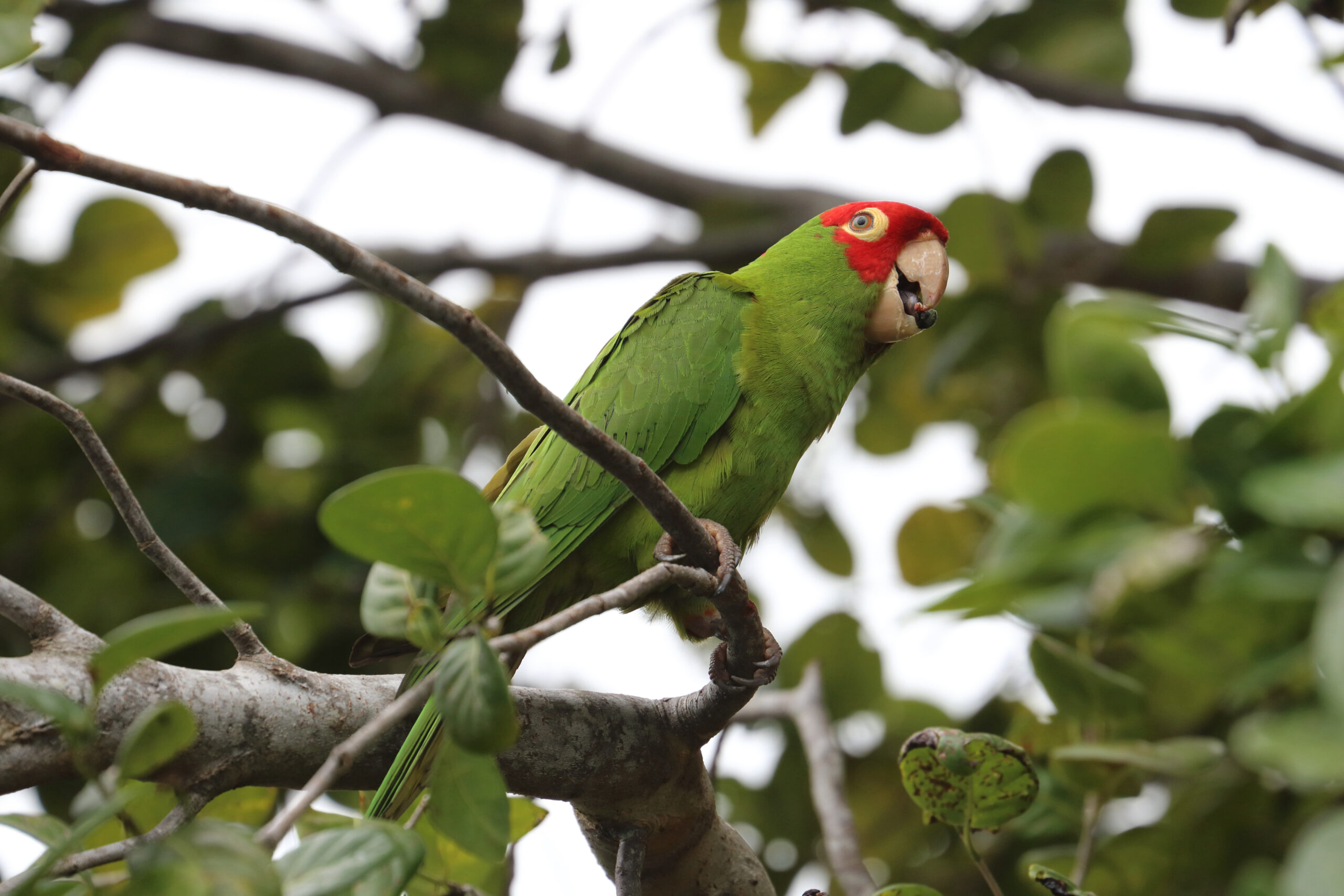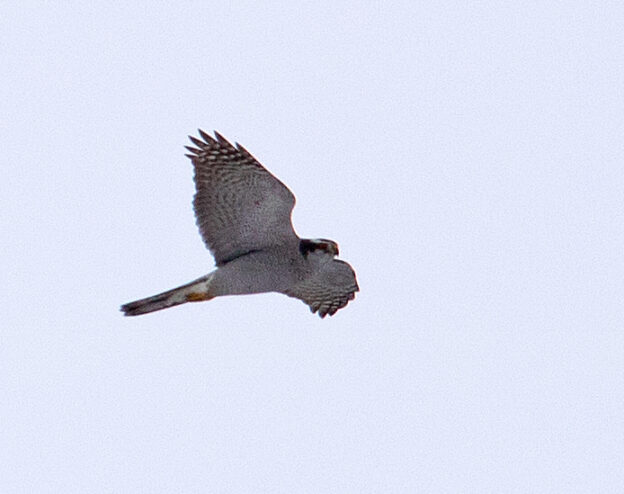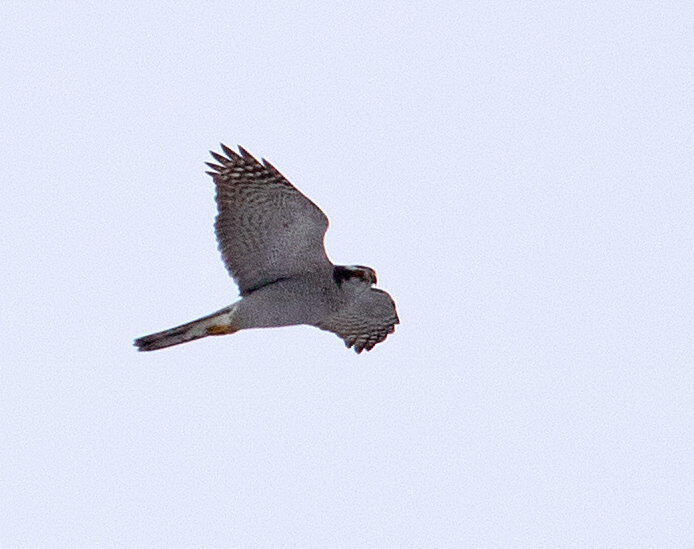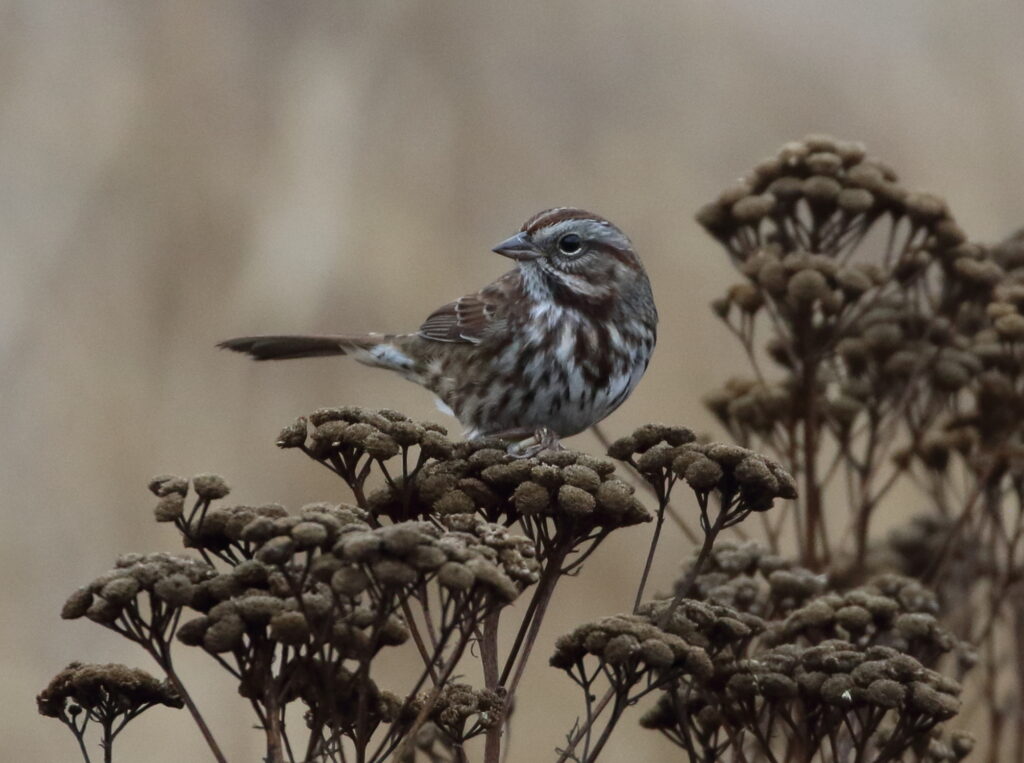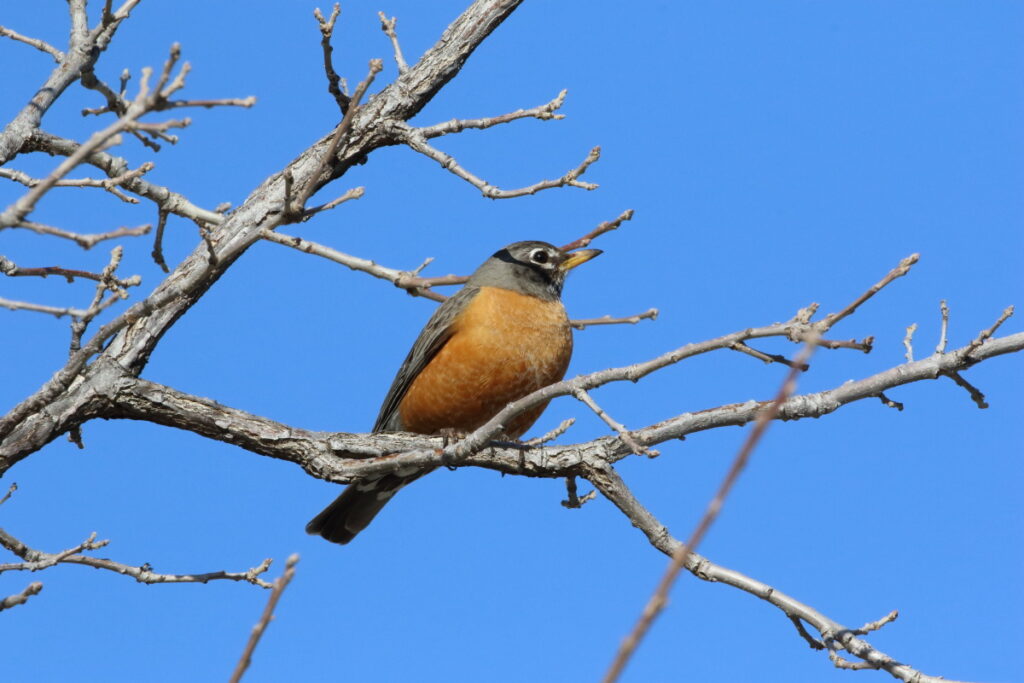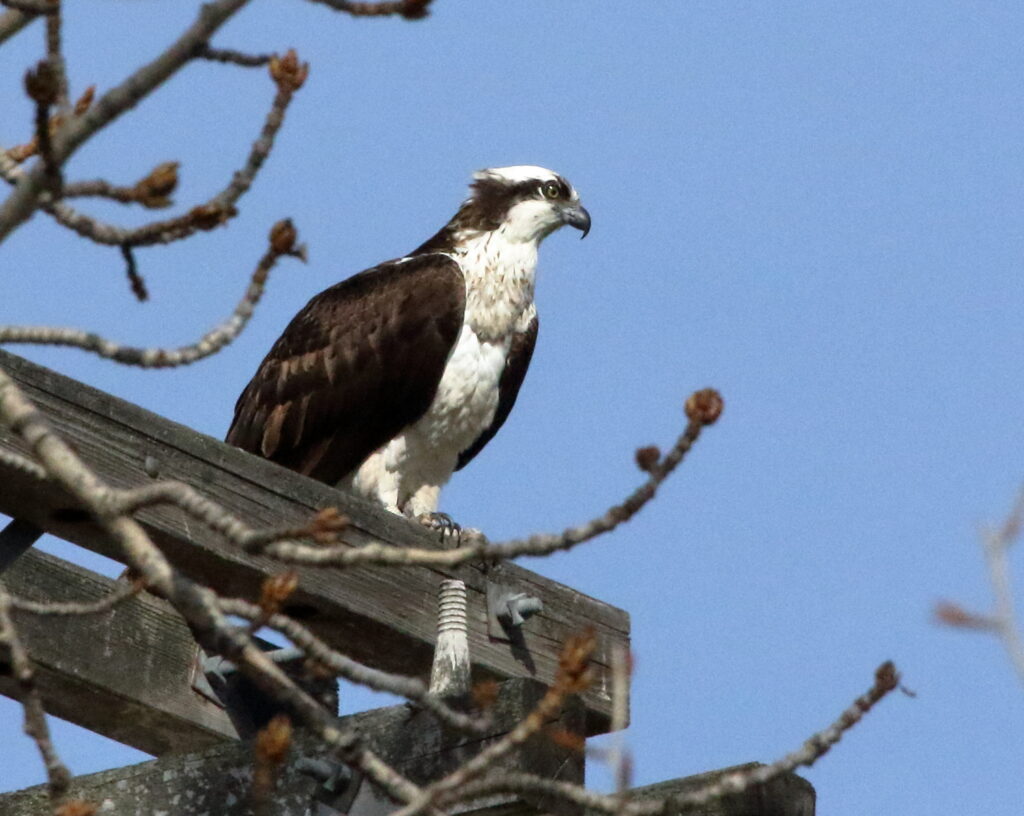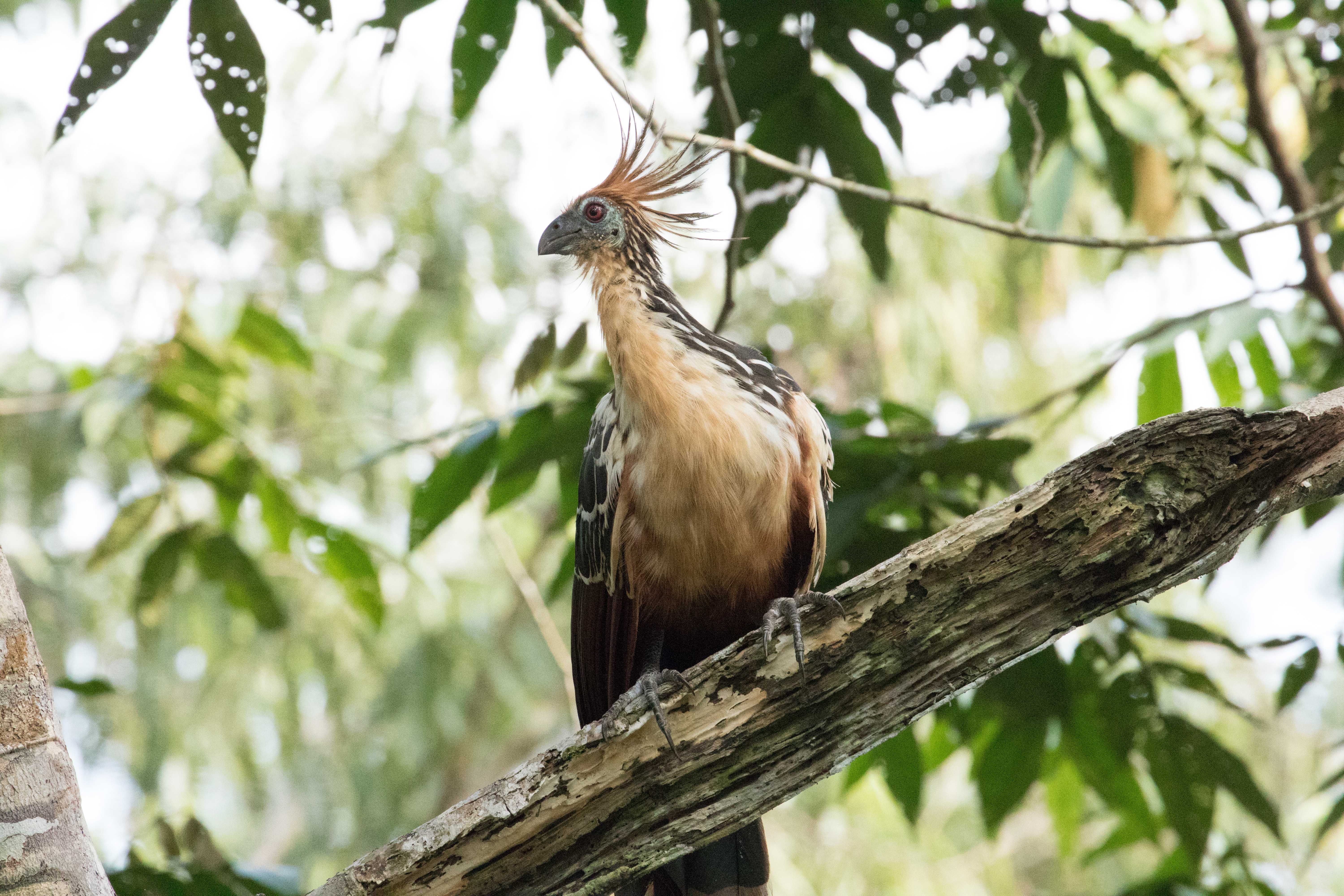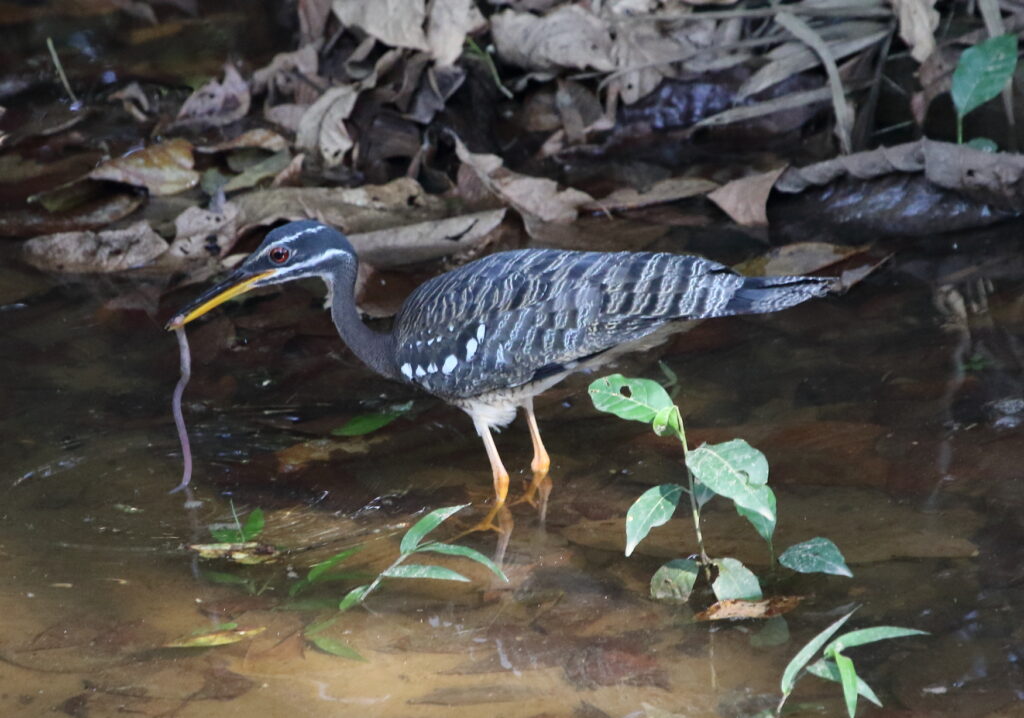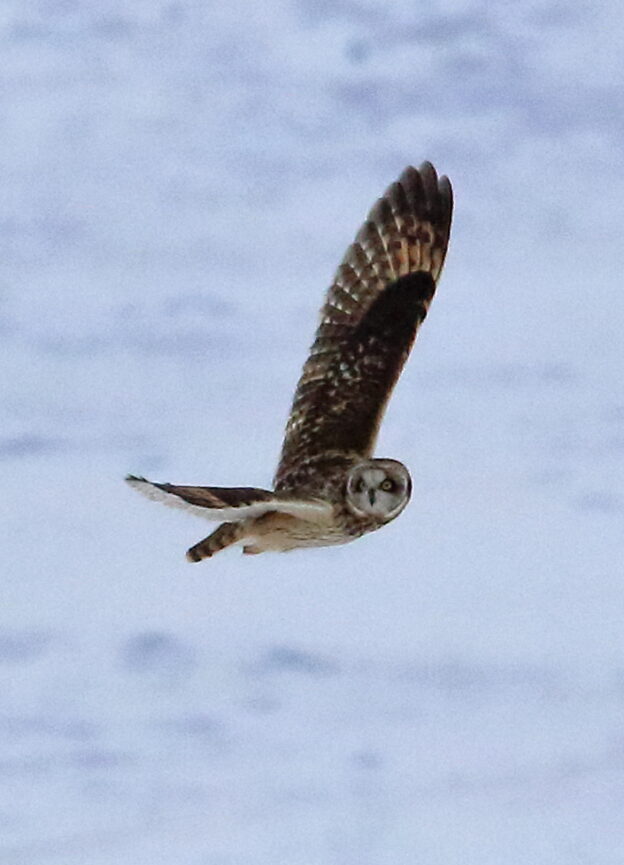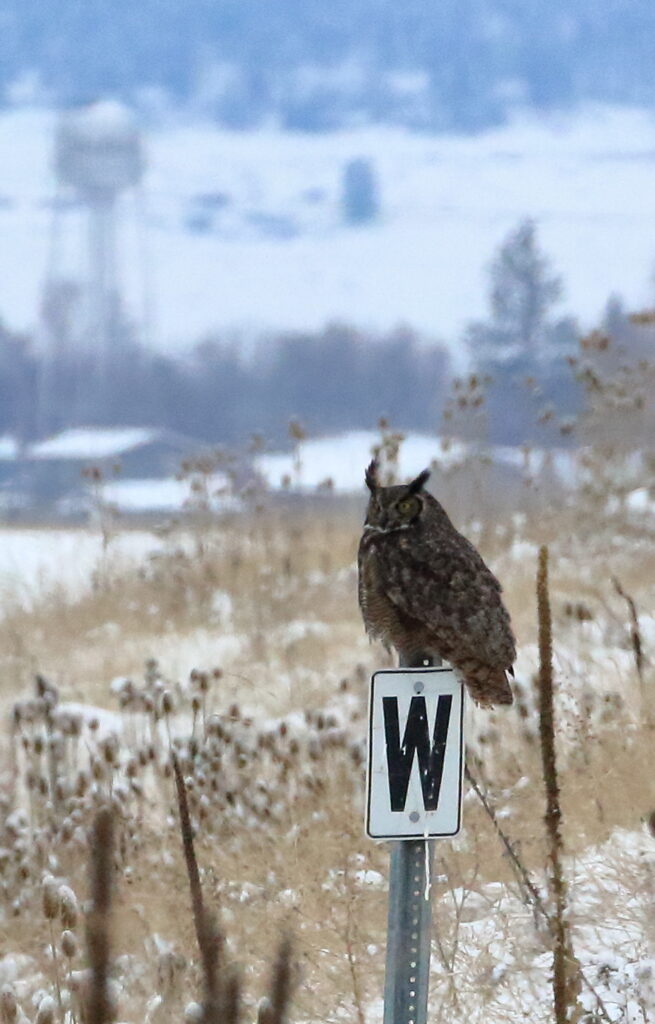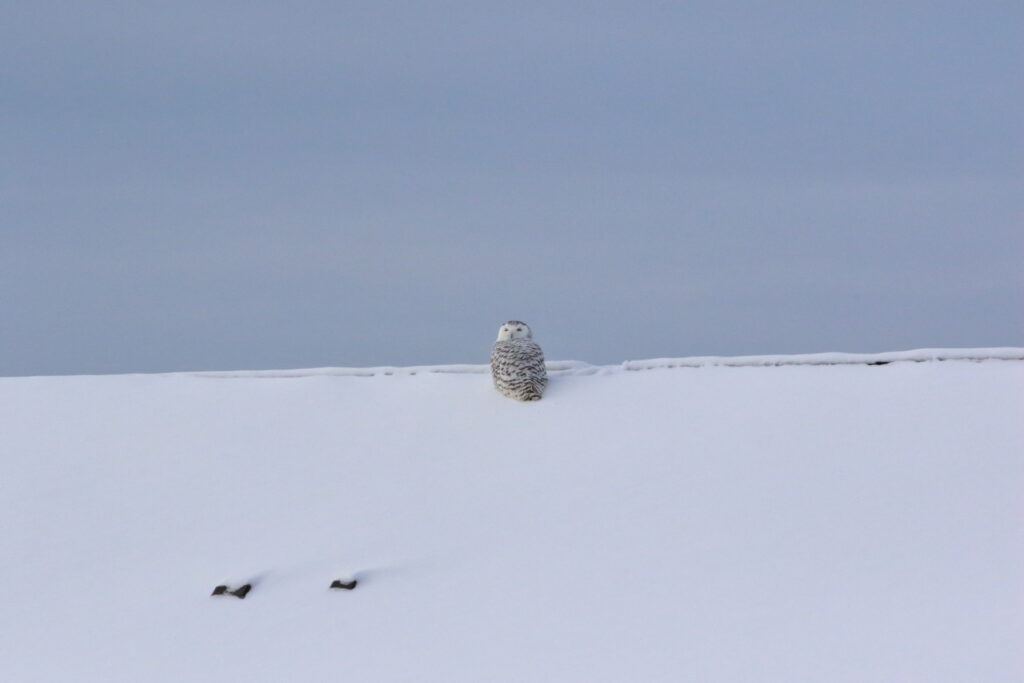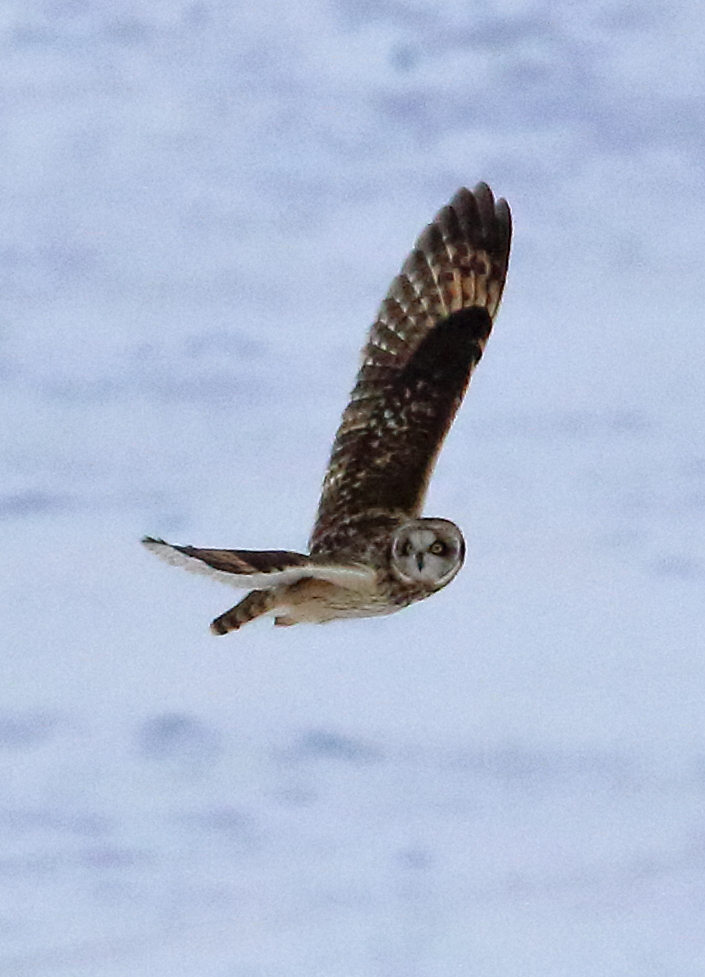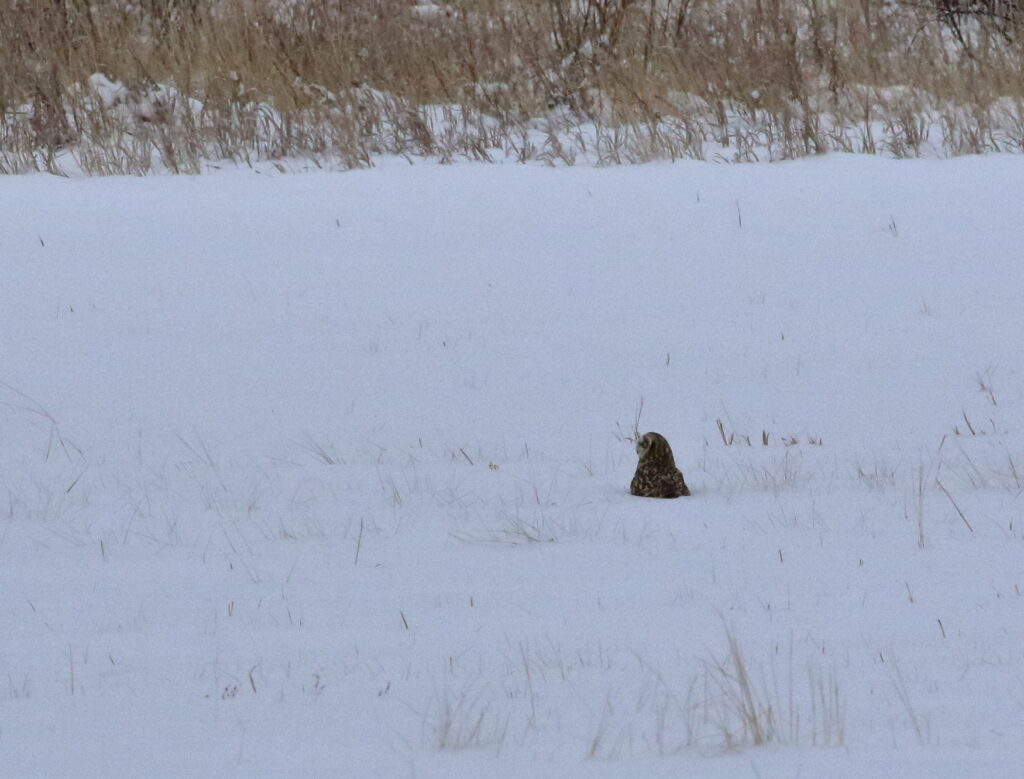Welcome to Episode 3 of Braden’s account of his remarkable Spring Break birding with Nick Ramsey. Part 2, last week, got almost a record number of views, and we have no doubt you’ll love this post every bit as much. I mean, parrots! How can you resist? If you enjoy these posts, please share and subscribe. Thanks for reading!
The heat was already wet and oppressive when I woke around dawn the next morning, after a very minimal amount of sleep. I crawled out of the passenger seat of the car, still groggy, into the gray light of a forest in the process of waking up. Nick was already there, and suggested that we head over to the main parking area for Loxahatchee National Wildlife Refuge, a place famous for its snail-loving birds: more specifically, Limpkins and Snail Kites. We did so, and then began our two-hour tromp around the refuge.
It’s not like there weren’t birds at Loxahatchee. For one, the marshy, reedy areas were filled with Common and Purple Gallinules, both colorful, entertaining water birds that I spent a while photographing. The waders, specifically White Ibises, were around, and kept making flights over us as we scanned the marshes for Limpkin. And in the forested areas, we did manage to draw in a few passerine species, including American Redstarts, a new warbler for the trip, and a very cooperative Blue-headed Vireo.
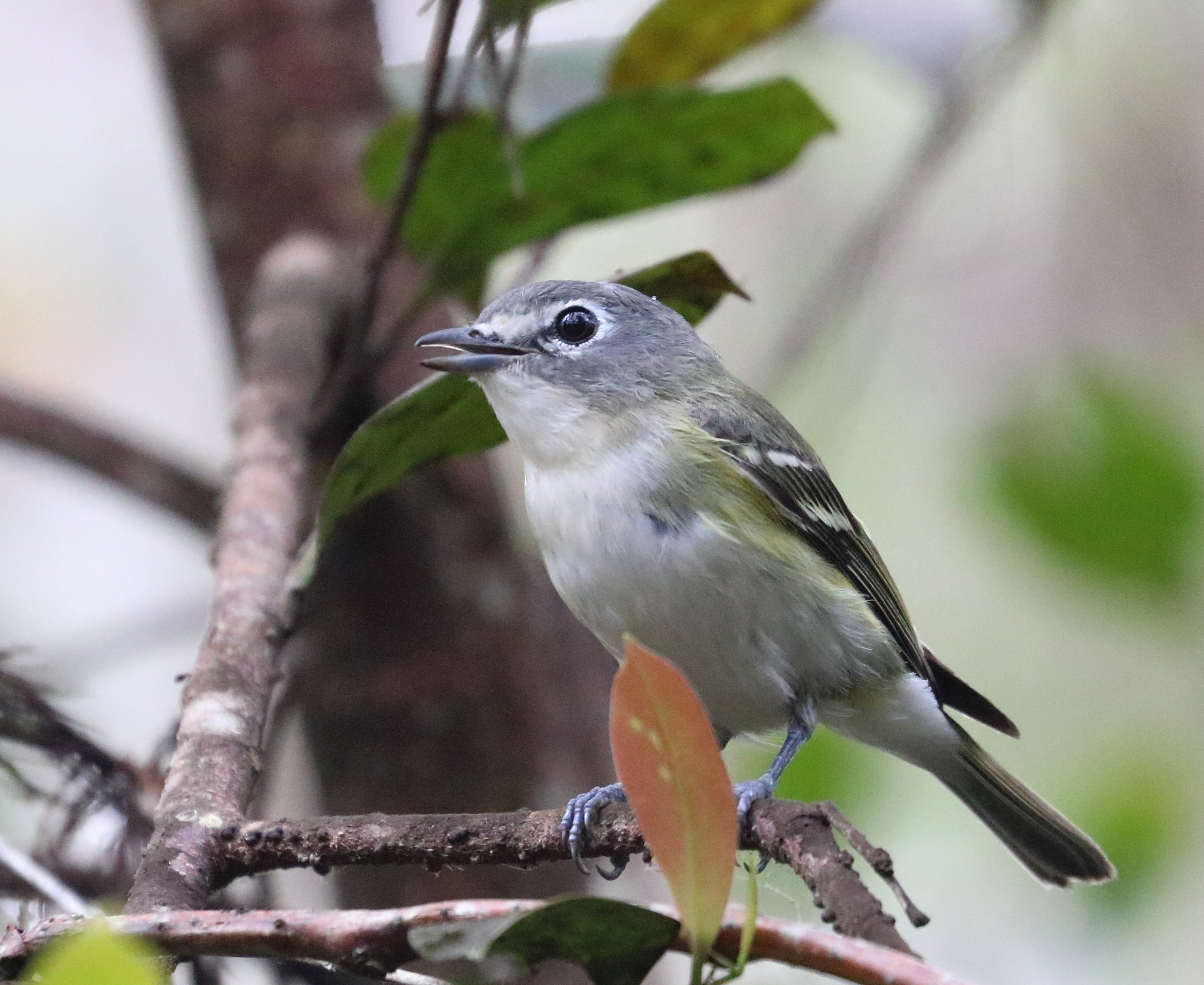
All-in-all, however, the wildlife refuge proved disappointing. We missed Snail Kite and the only Limpkin we saw was a brown blob disappearing into a stand of trees, never to be seen again. The Gray-headed Swamphens (an Old World exotic marshbird) that Nick had spotted here last time weren’t around, and we didn’t find any of the particularly cool wintering warblers that we could have. Ducks, again, were lacking, and the wader numbers aside from the ibises were notably worse than expected. The day (along with the poor sleeping conditions the night before) was not off to a good start.
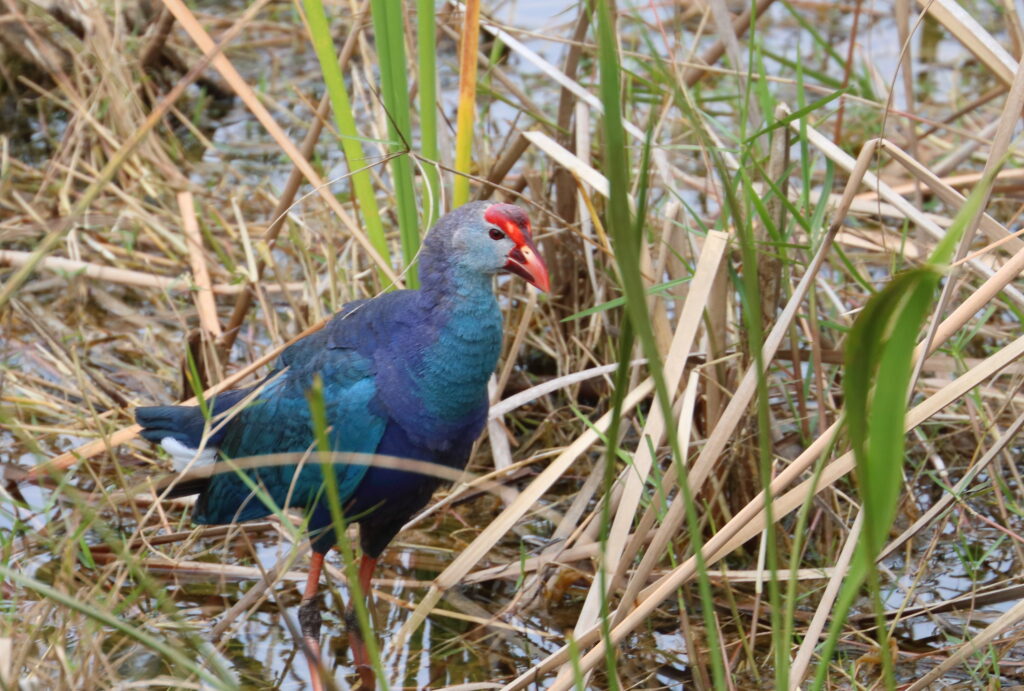
In a search for swamphens, Nick and I drove to a small park on the outskirts of Fort Lauderdale called Markham Park next. This park was situated right next to a part of the Everglades (though not the National Park yet) and was known for having most of the Miami exotics that Nick wanted to see on the trip: Spot-breasted Oriole and White-winged and Yellow-chevroned Parakeets. We picked a small portion of the park nearest to the wetlands and hiked towards them, noting butterflies I’d never seen before, including the Zebra Longwing, which belonged to a tropical genus. Eventually we got to the wetlands, finally nabbing one of our targets for the day. Two giant water-chickens, sporting an even crazier range of colors than Purple Gallinules, lounged in the reeds. Gray-headed Swamphens were related to gallinules and native to southern Asia, and thrived in several places in southern Florida. These were one of many exotics we would see as the day progressed.
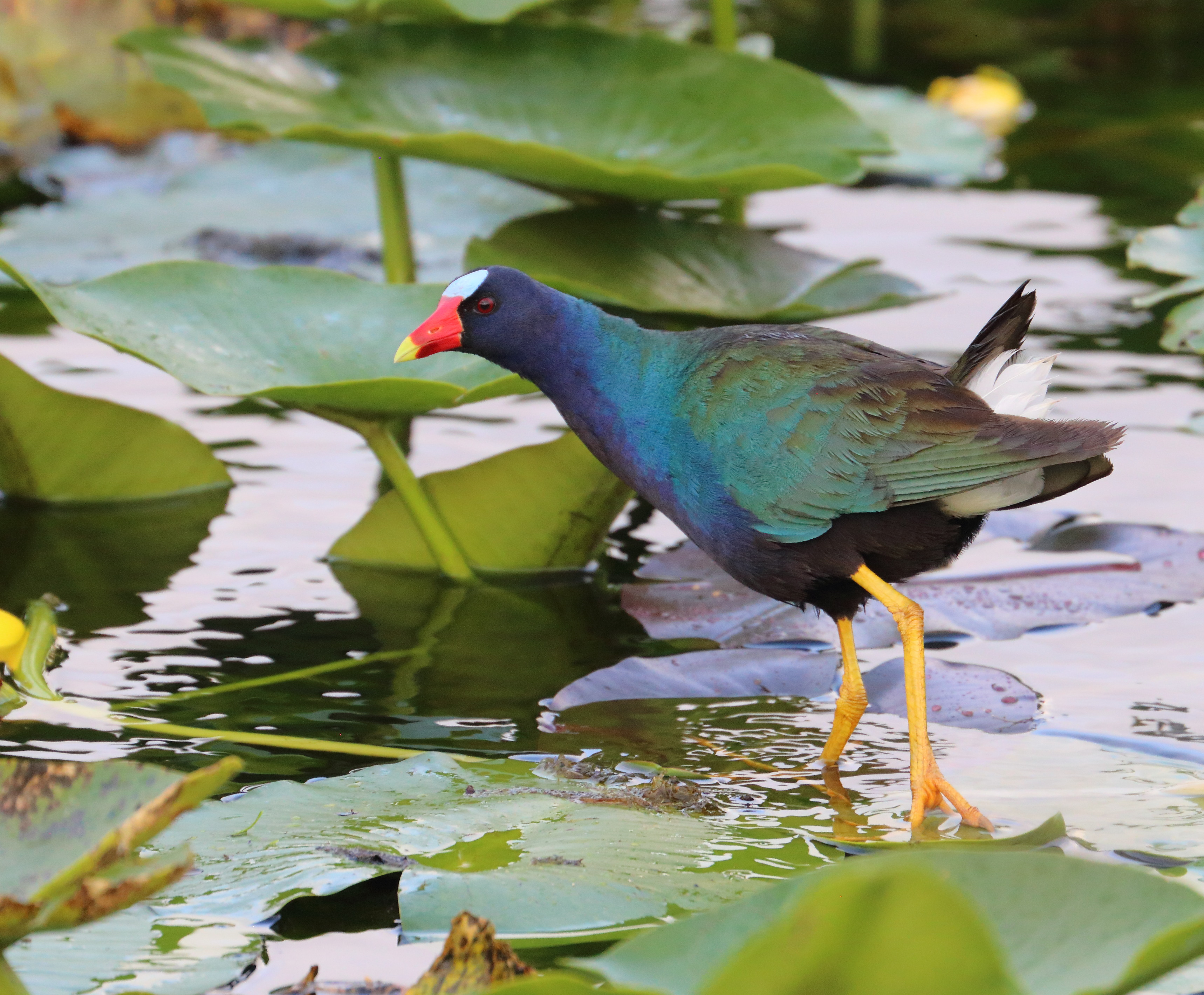
As far as biodiversity is concerned, south Florida is about as crazy as you can get. Along with a remarkable sweep of native and endemic species, including American Crocodile, Snail Kite and Florida Cottonmouth, hundreds if not thousands of species have been introduced to the area. The United States once had two native parrots. The Carolina Parakeet is now extinct, and the Thick-billed Parrot’s population is too small to support natural wanderings across the Mexican border. Now more than fifty parrot species from Latin America and the Old World have been reported within our country’s borders, most of them from Florida. Many are established too—my dad and I had Nanday and Red-masked Parakeets and Red-crowned Parrots on our life lists from Point Mugu State Park, San Diego, and Brownsville. Florida, though, boasted more species than Texas or California, and later in the day we would be looking for some of them.
First, though, we were headed to Alligator Alley, a large highway cutting across a portion of the Everglades. As we drove away from the suburbs of Miami, the buildings were replaced by sawgrass wetlands as far as the eye could see. I’d never seen any habitat this expansive and undeveloped, and as we drove into healthier and healthier habitat, waders began to lift out of the marsh on both sides of the car. Black-crowned Night-herons flew high overhead while large flocks of White Ibis dropped into distant marshland. It was incredible—I’d only seen this number of birds in one other place—Freezout Lake, Montana. It was as if the grass was covered in patches of cotton composed of egrets and ibises. Every once in a while, a radiantly-pink spoonbill or large Great Blue Heron joined the fray, trailing behind a flock of Tricolored or Little Blue Herons. As Nick drove, I took as many mental pictures as I could—there was no place like this anywhere else on the planet.
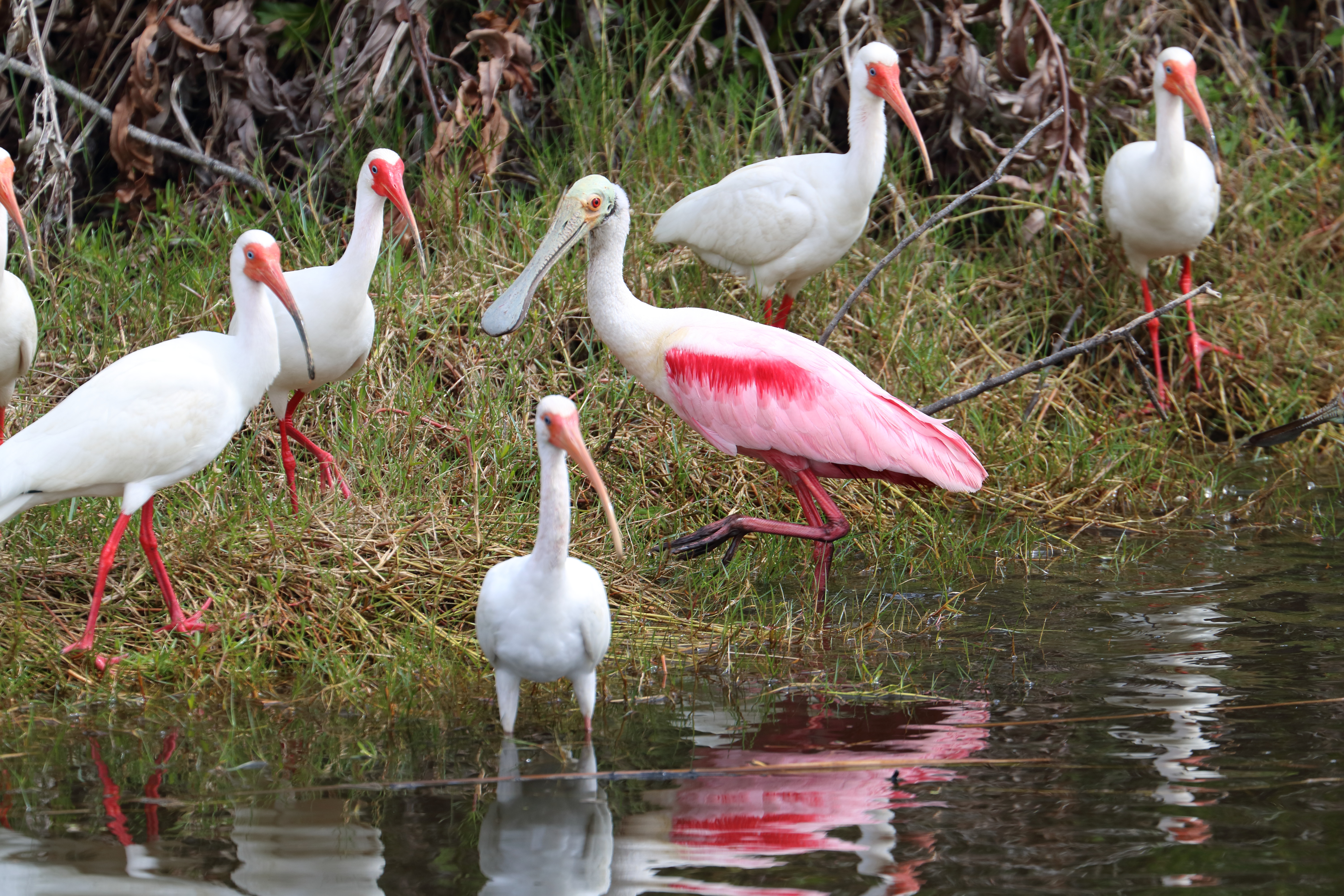
We pulled off the highway towards a small highway rest stop, spooking some lazy Black Vultures. There was an observation tower here, and we hoped to spot some Snail Kites, birds we’d missed at both Loxahatchee and Markham Park. We climbed the tower with Nick’s spotting scope, then got to work scanning the Serengeti of Florida. Right next to us a wide canal provided us with avian entertainment as we looked for the kites. Five Green Herons had taken up residence in the canal, and they began fighting with the other species for prime perching spots overlooking the water. Boat-tailed Grackles, Fish Crows and both Turkey and Black Vultures tussled around us, covering most of the trees and walkways. And from our vantage point, we could see roughly five American Alligators eyeing the birds above them.

While we didn’t find any Snail Kites, we did finally get a good look at a Limpkin as it foraged for snails on top of a patch of trash on the other side of the canal. The bird only appeared for a few minutes, and it made me wonder just how many of this species lived in the endless marsh. After checking the other side of the highway and getting poor looks at my lifer Painted Bunting, we drove back into Miami, our minds focusing on exotic species. Iguanas soon dotted the streets, and we got Common Mynas, a songbird introduced from Asia, next to a McDonald’s as we stopped for lunch. Nick pointed out a Peter’s Rock Agama, a funky red-headed lizard native to West Africa, scampering up a palm tree. Then, as we pulled into the Biltmore Hotel parking lot, we immediately heard screeching above us: parakeets.
We piled out of the car just as a large flock touched down in front of us. The flock consisted of both Red-masked and Mitred Parakeets, two very similar species native to South America. Interestingly enough, I’d seen both species before, the former in San Diego and the latter in its native range in Peru. This hotel had more to offer though: it was a roost site for at least half a dozen species. It also happened to be one of the ritziest hotels in Miami, offering rooms between six hundred dollars and two thousand a night, and its towering red walls hosted cavities that parrots liked to roost in. What’s more, it overlooked a large golf course, and Nick and I felt like outsiders as we walked around the courtyard in clothes that hadn’t been washed in several days. This was the kind of place I’d imagined when I’d thought about Florida.
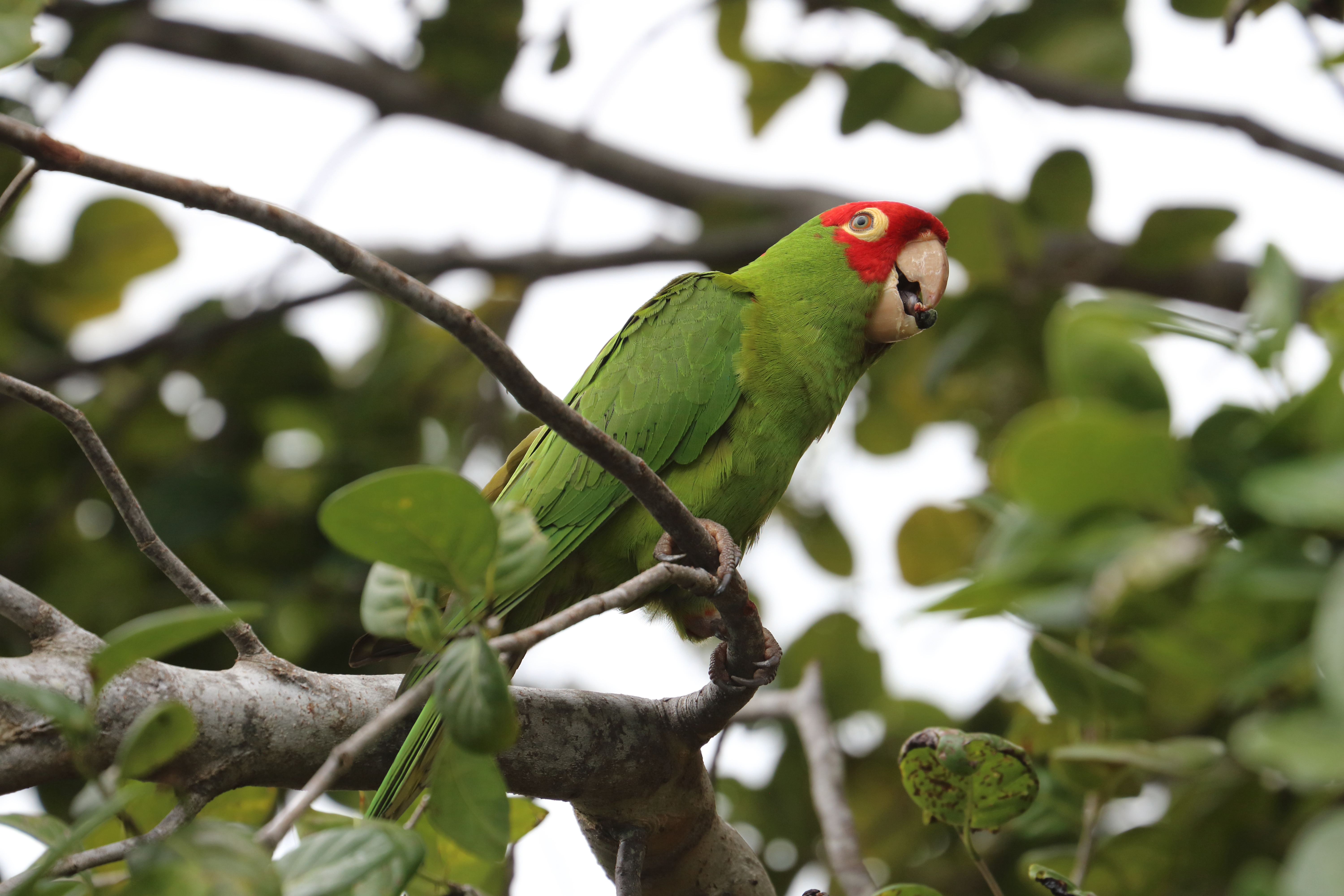
While the parakeets were plentiful, we did not find either of our targets: Yellow-chevroned and White-winged Parakeets. Both species, which were substantially smaller than the parakeets, were mostly green, with small markings on the wing that identified them. While Yellow-chevroned was firmly established in the area, White-winged was on the decline, having disappeared from all of South Florida in the last few years. No one understands the cause of this decline was since there appears to be plenty of food (palm nuts) around, and parrot species have coexisted here for decades. Suddenly, though, this species that had been reliable ten years ago was nowhere to be found, mirroring the disappearance of another parrot species from Miami thirty years prior, the Budgerigar.
Our next spot was a run-down park called Pine Woods Park, a place Nick picked out for both Red-whiskered Bulbul and Spot-breasted Oriole, species that had been introduced from southern Asia and central America, respectively. Upon walking through the tall cane grass in the park, we immediately found a beautiful, crested bulbul perched up on a stalk, marking Nick’s first (and spoiler alert, only) lifer for the trip! We marveled at it as two other exotic species, Scaly-breasted Munias and Monk Parakeets, called nearby. Next, we headed to the Baptist Hospital in Kendall, a known location for the oriole. We struck out on the species again, but did get to enjoy more time with Red-masked Parakeets clinging to buildings and Egyptian Geese and Muscovy Ducks with babies running around a nearby lawn. We then drove the neighborhoods, trying and failing to find the oriole, and in a last-ditch effort, returned to Pine Woods Park. Walking among the introduced vegetation, we again struck out but did spot a smaller parakeet flying with the Monk Parakeets above us. It landed and Nick called “Yellow-chevroned Parakeet!” It was no White-winged, but it did bring our total parakeet species count for the day up to five, including a few Nandays we’d seen at Loxahatchee earlier!

Somewhat more content, we headed south towards Everglades National Park, pulling into the parking lot right outside the entrance at around 8 P.M. I’d requested an earlier night tonight, so we set up a tent for me as Nick prepared to go look for snakes in the glades. As he was about to leave, though, we suddenly heard something go “chuck-willow-widow!” from a stand of trees nearby. Nick looked at me excitedly.
“Chuck-wills-widow!”
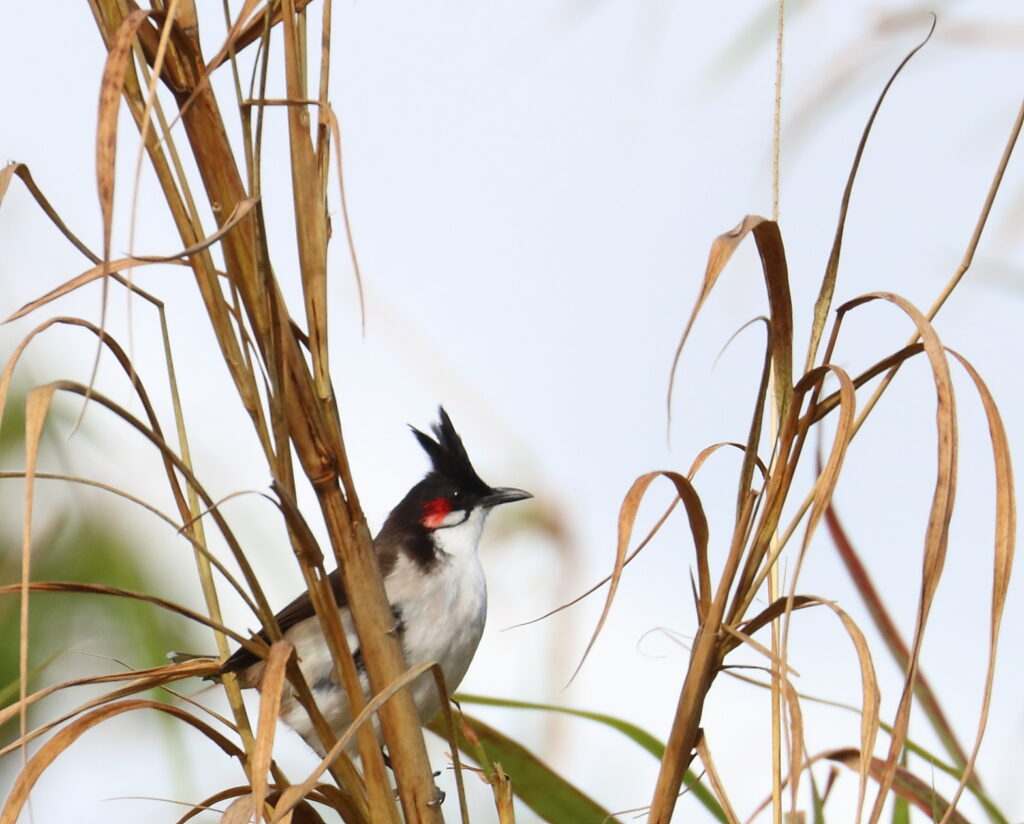
This nocturnal species was not a bird I’d imagined getting on the trip, and we high-fived as we heard at least half a dozen calling from around us. Nick then headed off into the National Park for a few more hours as I dozed off to sleep to the sound of the Chucks. The day had turned out all right after all, and tomorrow we would finally reach our main destination for the trip: the Florida Keys.

